Today we are going to visit the small township of Silverton, 25 kilometres from Broken Hill. The first place to discover and mine silver and lead in 1881. On the way is the turn-off to Daydream Mine, along a red dirt road for 13 kilometres. It is a must to see, being the only mine still left that is open in its original condition to see just how the miners worked and suffered back in the 1800’s. 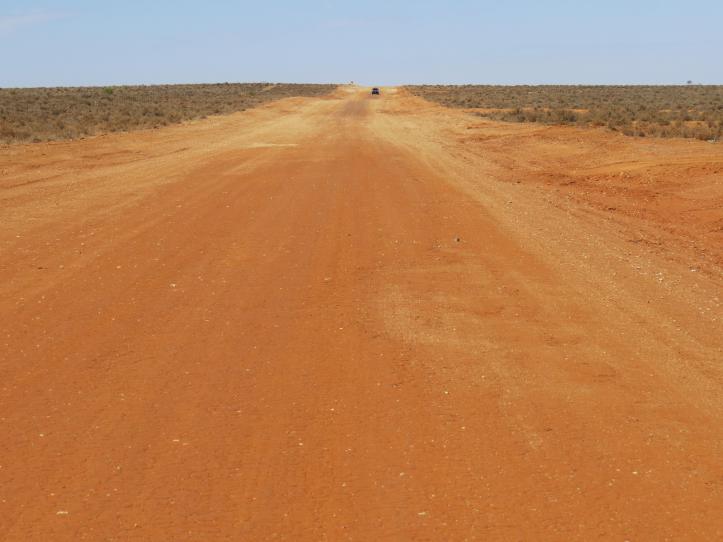 The road twists and turns through the Appollyon Valley, but it is a scenic drive. Passing rock outcrops and dry river beds lined with majestic gum trees. On the distant horizon an army of wind turbines stand sentinel.
The road twists and turns through the Appollyon Valley, but it is a scenic drive. Passing rock outcrops and dry river beds lined with majestic gum trees. On the distant horizon an army of wind turbines stand sentinel.
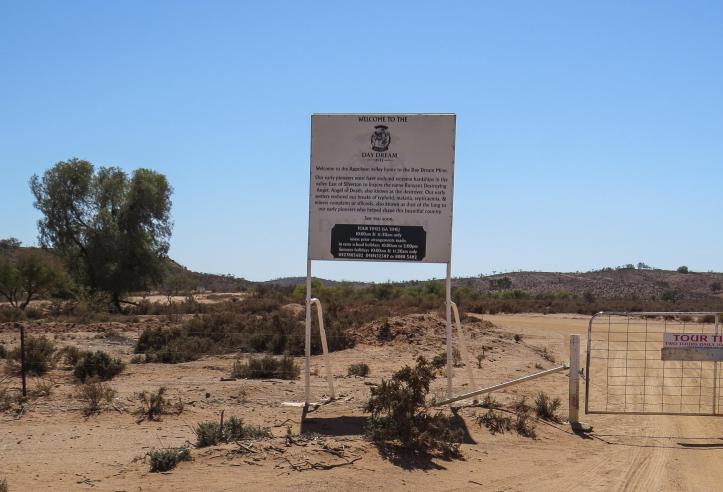 Passing through a gate we are now on Daydream Mine land.
Passing through a gate we are now on Daydream Mine land. 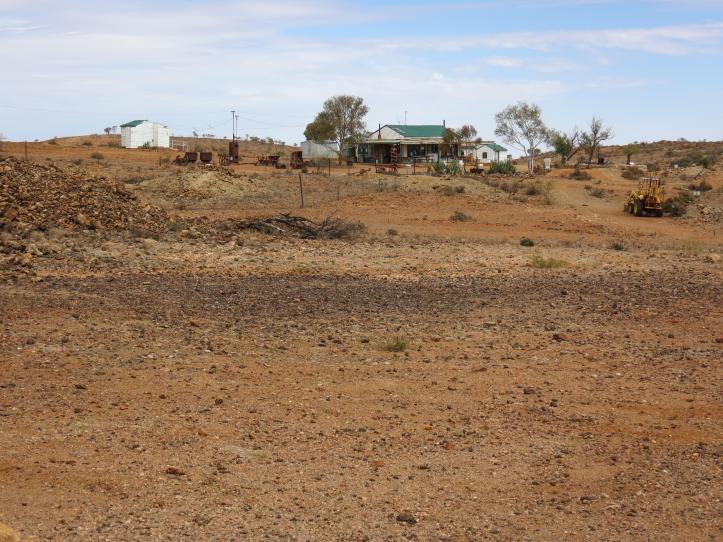
A group of people are gathered around the small rustic looking, Queenslander style café with a wide veranda. Home baked scones are on offer and we can’t resist.
The scones are delicious, light and fluffy so we are now ready for the tour. Kevin is our first guide and he has a wealth of information about the history of the mine, the land and geology, plants and animals in the area and has many humorous anecdotes as well.
Daydream mine did in fact start from a daydream.
The beginnings of the Daydream Mine began with just that. A daydream. In December, 1881, when prospector Joe Meech awoke from a nap under the shade of a tree, ‘he saw before him on the ridge a metalliferous outcrop and stumbling wearily towards it, found it to be a ‘blow’ of mineral, charged with bright blue, green and yellow carbonates.” (“From Silver to Steel“, Roy Bridges)
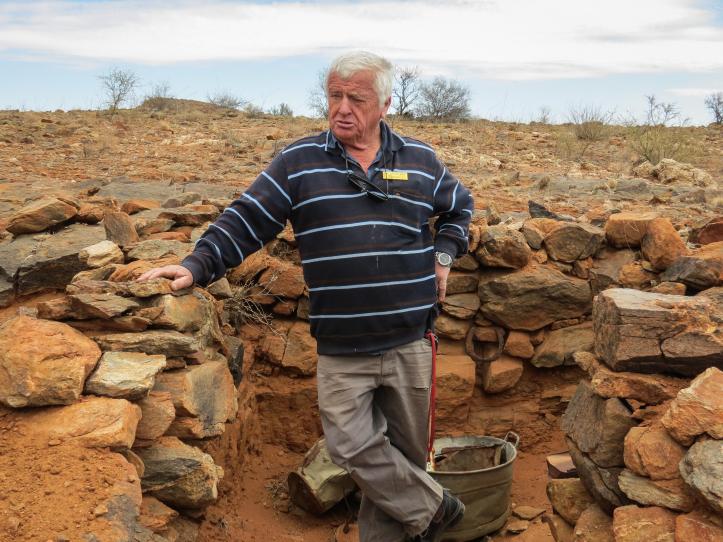
Kevin White, our guide, is the co-leaseholder of the Daydream site and he says he’s been down into the mine somewhere between 12,500 and 13,000 times.
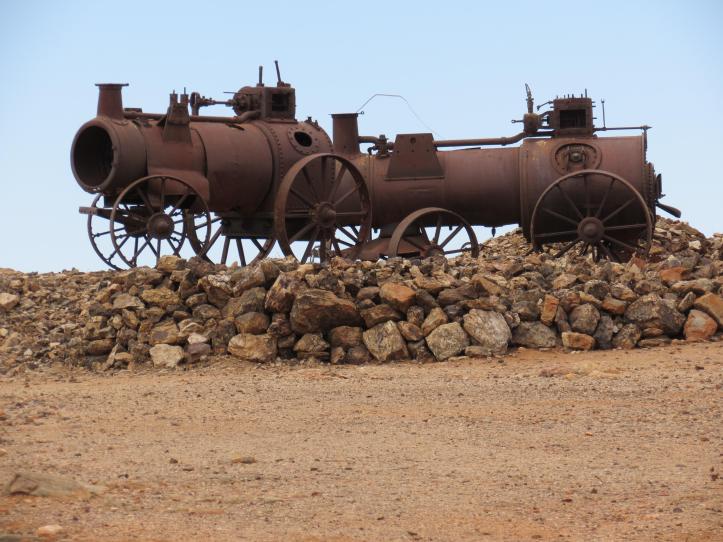
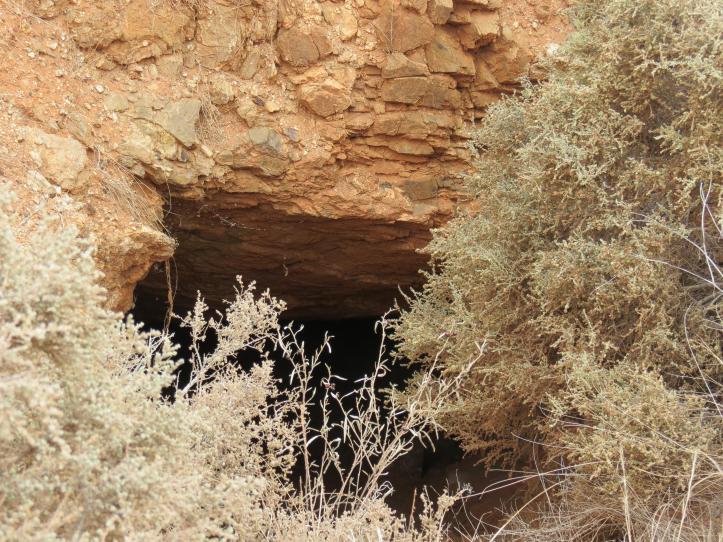 We walk past rusty old machines now abandoned to the elements and testament to earlier days. Artefacts hang in trees and old buildings are fenced off with barbed wire. Stay strictly on the path Kevin tells us, old abandoned diggings are everywhere.
We walk past rusty old machines now abandoned to the elements and testament to earlier days. Artefacts hang in trees and old buildings are fenced off with barbed wire. Stay strictly on the path Kevin tells us, old abandoned diggings are everywhere.
Then we don hard hats and Jason takes over to lead us down into the bowels of the earth.
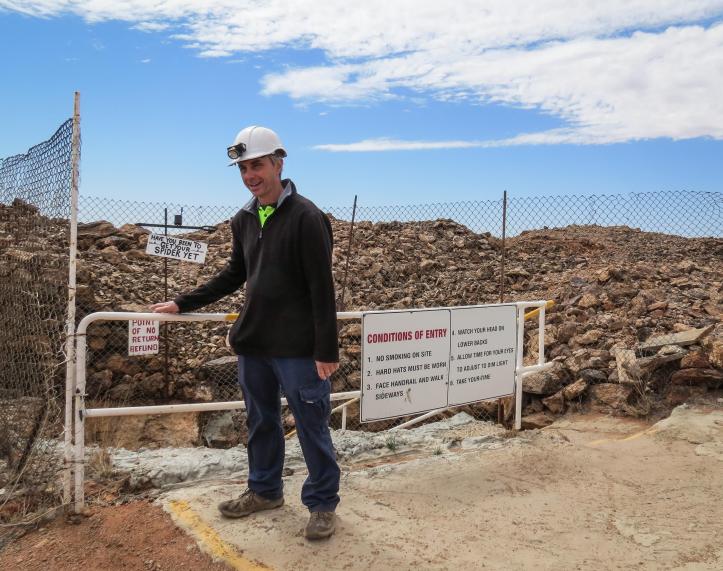 We are told, hang onto the hand rail and when the going gets steep go down backwards, or sideways, but be careful and duck down in the low parts. So switching on the head lights we begin the descent into darkness.
We are told, hang onto the hand rail and when the going gets steep go down backwards, or sideways, but be careful and duck down in the low parts. So switching on the head lights we begin the descent into darkness.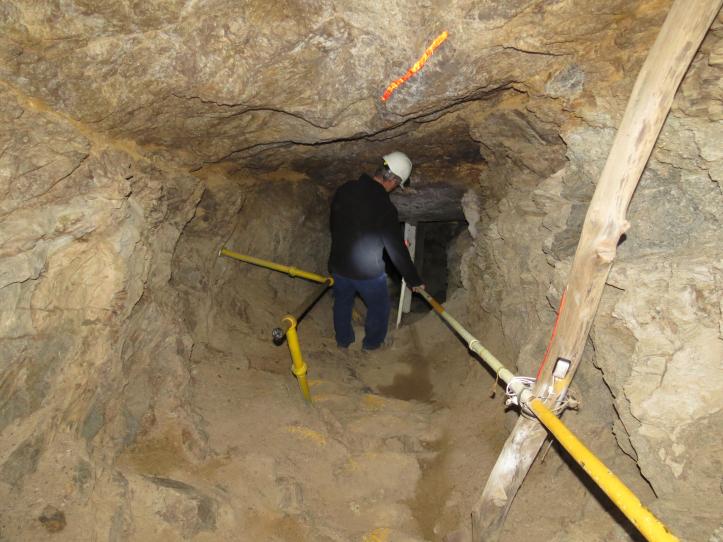
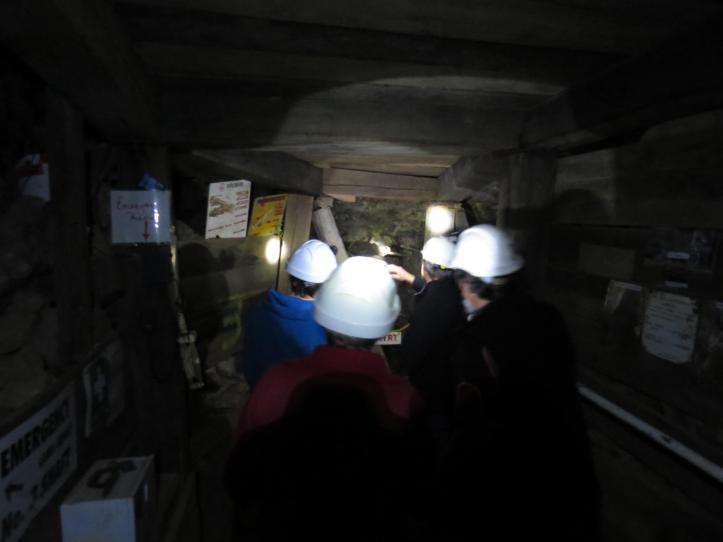 It is fortunate we have hard hats on as there are constant clangs as hats hit hard rock ceiling if we do not duck low enough through narrow passages. The early miners were mostly Cornish men, we are told, and quite short in stature so not a problem for them. It is hard to imagine that there had been 140 men and 20 boys, some as young as 8 years old, working a 6 day, 12 hour week. Dotted throughout the tunnels are artefacts left over from the mining days, an old wooden wheelbarrow, a hand forged shovel, sledge hammers, metal taps and an old ‘oxygen suit’ with a tank attached, for use in an emergency, old hessian bags and a rusted ore box.
It is fortunate we have hard hats on as there are constant clangs as hats hit hard rock ceiling if we do not duck low enough through narrow passages. The early miners were mostly Cornish men, we are told, and quite short in stature so not a problem for them. It is hard to imagine that there had been 140 men and 20 boys, some as young as 8 years old, working a 6 day, 12 hour week. Dotted throughout the tunnels are artefacts left over from the mining days, an old wooden wheelbarrow, a hand forged shovel, sledge hammers, metal taps and an old ‘oxygen suit’ with a tank attached, for use in an emergency, old hessian bags and a rusted ore box.
We stop in front of a shelf with a collection of lights used through the years starting with a candle carried in a “spider” to the present day LED lights. 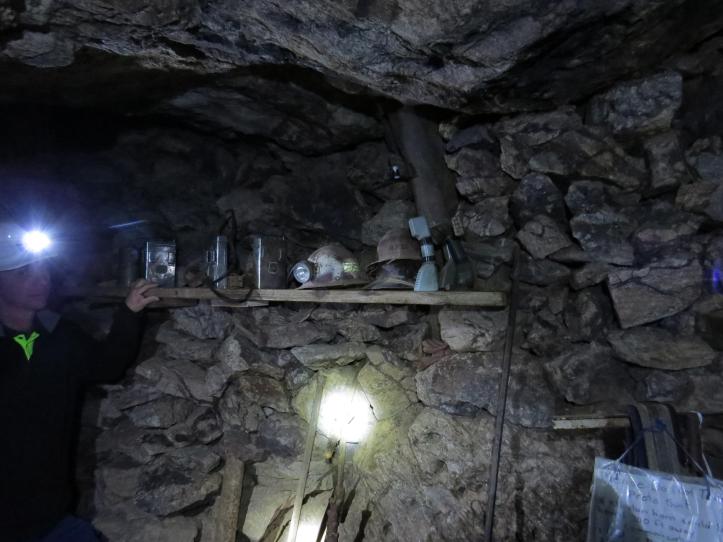 Jason demonstrates how the spider is jammed into a crevasse in the rock face with a candle in it. Then he tells us all to turn our head lamps off. We are plunged into darkness so intense and the silence so absolute we can hear each other breathing. It only lasts for a few minutes then Jason strikes a match and we experience the feeble light from the candle that the miners had to work in. He shows us how, using a pick in very confined spaces, a hole is created to take the stick of dynamite that will blow out a section of the wall. Then the young boys would be put to work picking through the debris and putting it into an ore box to be taken to the surface to be smashed by sledge hammers.
Jason demonstrates how the spider is jammed into a crevasse in the rock face with a candle in it. Then he tells us all to turn our head lamps off. We are plunged into darkness so intense and the silence so absolute we can hear each other breathing. It only lasts for a few minutes then Jason strikes a match and we experience the feeble light from the candle that the miners had to work in. He shows us how, using a pick in very confined spaces, a hole is created to take the stick of dynamite that will blow out a section of the wall. Then the young boys would be put to work picking through the debris and putting it into an ore box to be taken to the surface to be smashed by sledge hammers.
We are now down to the third level and time to, carefully, retrace our steps with our modern day head lamps shining the way, back to the surface.
On the way out we pass this large sculpture of the Miners Spider.
So with these images of the appalling working conditions of the early miners we head to Silverton… (to be continued)
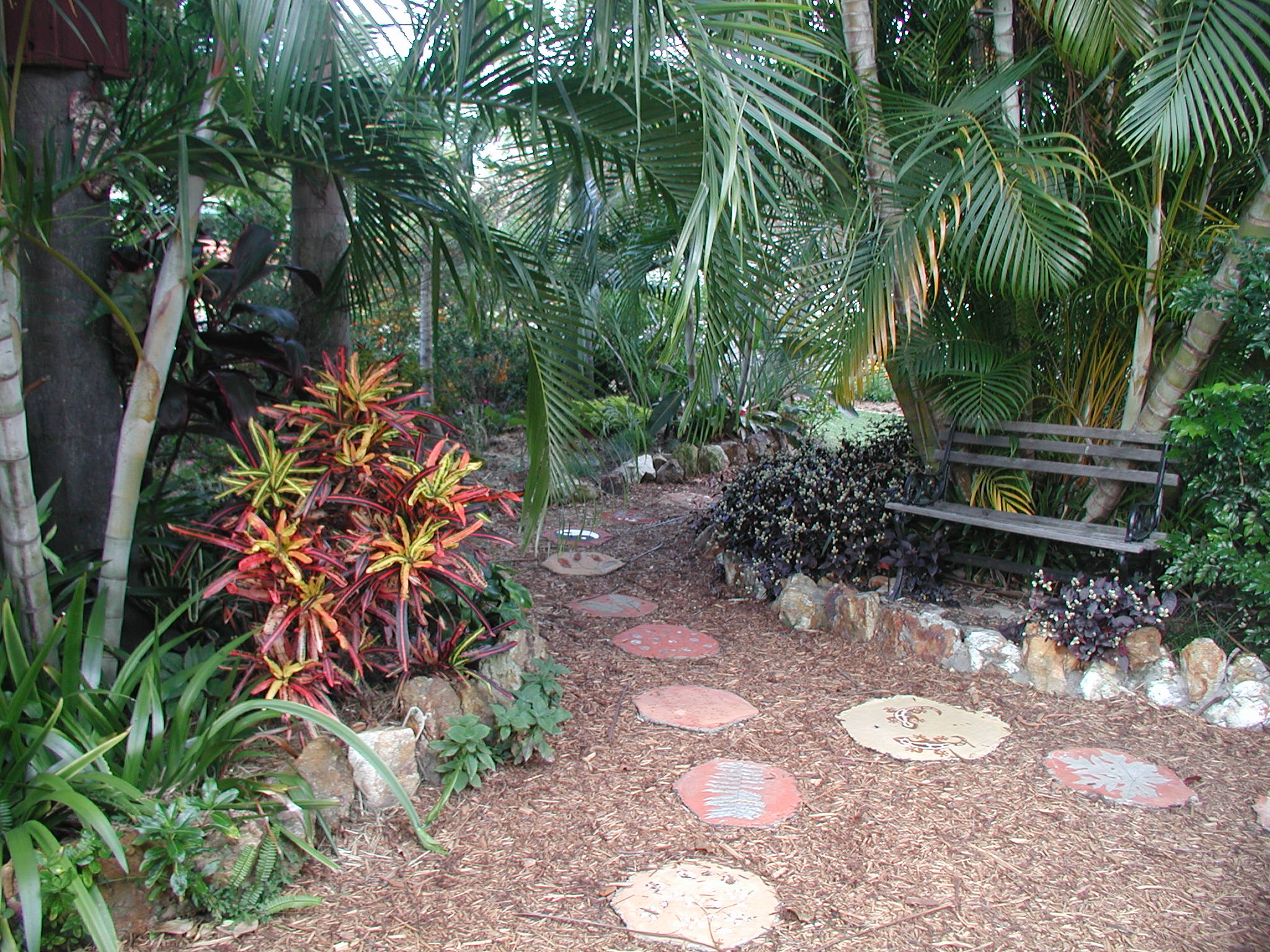













Thank you Pauline for another adventure.
There is never a dull moment traveling to way-out places with you.
And the way you present your posts are almost as good.
LikeLiked by 4 people
It certainly was an eye opener to how lucky we are today
LikeLiked by 1 person
How did you breathe? How do they get fresh air down there?
LikeLiked by 2 people
The air seemed ok, just ventilation from the entrance. But I can imagine it would be very dusty when being worked and most miners had bad lung problems
LikeLiked by 2 people
I’m quite claustrophobic so I see photos like that and I start to hyper-ventilate. 🙂
LikeLike
I get that completely. I would have been hopeless (and terrified) in a mine. I have coal-mining ancestors — back when both men and women (and children) worked in and around the pits.
LikeLiked by 2 people
😦
LikeLiked by 2 people
Back then it was probably the only job available. But it is so sad to think of young boys of 12 and 14 going down there.
LikeLike
Oh dear, take deep breaths…
LikeLiked by 1 person
I like your style of travelling. Keep the stories coming 🙂
LikeLiked by 1 person
Thank you, still a few more to come
LikeLike
Seriously hard work…I have visited Cornish tin mines and Welsh slate mines….Truly dangerous working conditions back in the day
LikeLiked by 2 people
Not for the faint hearted or tall people….
LikeLiked by 1 person
Indeed
LikeLiked by 1 person
What Jack said! Loved the images, and narrative. Never a dull moment with you two. I enjoy the arm-chair tours!
LikeLiked by 1 person
Pleased you came along and thank you for commenting
LikeLiked by 1 person
Why was Mr. Meech out there napping under a tree in the first place?!
LikeLiked by 1 person
I think I would nap in the middle of the day if there was a handy tree for shade. He did eventually die of thirst out in the desert
LikeLiked by 1 person
Oh, goodness! Sorry to go there!
LikeLiked by 1 person
The conditions people worked in. I admire you two for going down to look. Felt a twinge of claustrophobia just looking at the photos.
LikeLiked by 1 person
They asked us if anyone was claustrophobic and advised them not to go down. Terribly cramped conditions to work in
LikeLiked by 1 person
Fascinating places, I think we should experience them if we can. There’s a village called Silverton 8 miles from me and Cornwallis the next county!
LikeLiked by 1 person
Great insight into how they used to work. They certainly earned their pay
LikeLike
It really is a great tour a must do when in Broken Hill. 
LikeLiked by 1 person
It is an eye opener and good value. Are you going that way?
LikeLike
We did the tour a couple of years ago and thoroughly enjoyed it.
LikeLiked by 1 person
I would not have been a very good miner! What hard work.
LikeLiked by 1 person
I would not like being in such a confined space all day and bent over most of the time.
LikeLike
What a fascinating experience..not for the claustrophobic!
LikeLiked by 1 person
They ask if anyone is claustrophobic before they take us down.
LikeLike
Fascinating post, Pauline. I would have felt very claustrophobic but also a true remorse for the poor miners.
LikeLiked by 1 person
Back then that would be one of the only jobs available in that area so it would be go mining or starve.
LikeLiked by 1 person
Not my kind of place either, so thank you for the tour! I did once go down a gold mine in Johannesburg – we went down by lift so a very long way underground and I remember the heat and the blackness when we too were asked to turn off our head lamps. Several members of my father’s family were coal miners in Yorkshire.
LikeLiked by 1 person
I went down the gold mines in Kalgoorlie and that was a lift down into the depths, but this was far more difficult walking down a very uneven and narrow passage with very rugged steps, thank goodness for the hand rail
LikeLiked by 1 person
Yes, I could see how uneven that entrance was. No way would I have risked going down there!
LikeLiked by 1 person
Jack had his stick with him, thank goodness
LikeLiked by 1 person
Another wonderful post from one of my heart-places. I remember going down that mine with my son. The next day I was stiff and sore all over. Finally realised it was because underground I was tensed to support all that weight above me. No fluffy scones then! Thank you so much for a chance to nostalge
LikeLiked by 1 person
I thought it was a very genuine mining experience I could really feel how it was all those years ago. Pleased it brought back memories for you
LikeLike
[…] 2 weeks “fly-in, fly-out” to the outback and exploring the fascinating culture and scenery of Broken Hill. […]
LikeLike